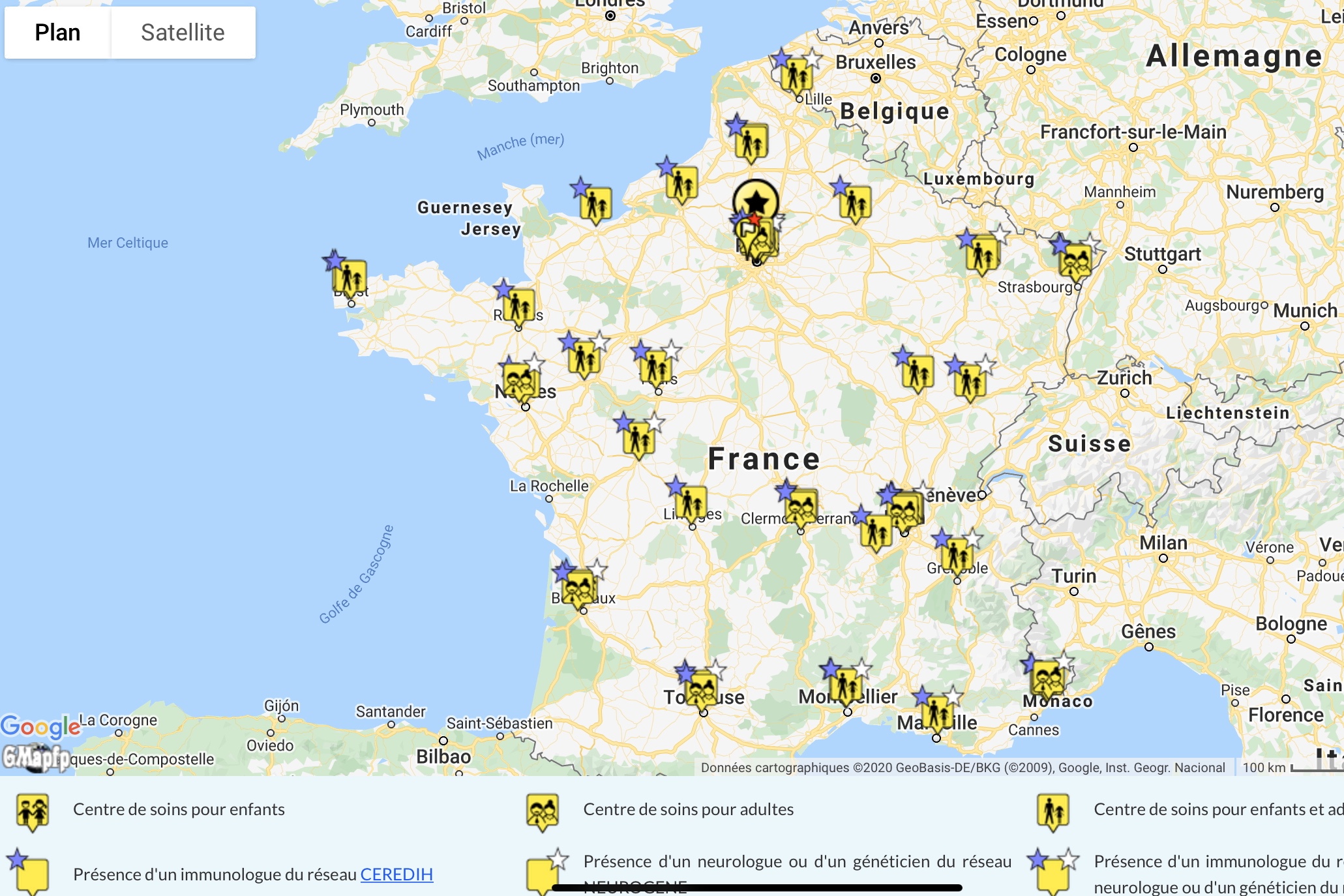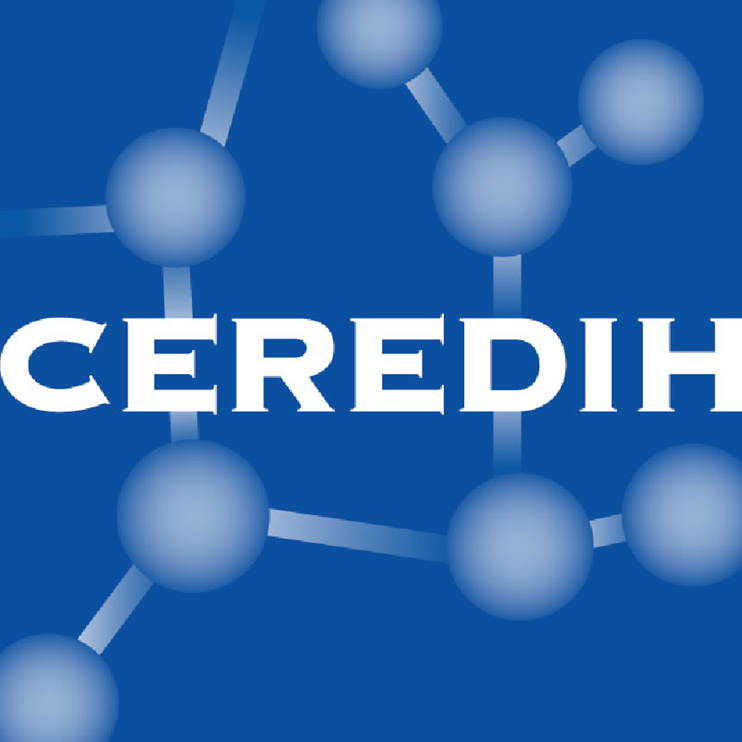Physiotherapy aims to maintain or restore normal movements of the human body, its "mechanics". It is particularly important in ataxia telangiectasia to fight against rigidity, muscular and coordination problems that develop gradually with neurodegeneration and amplifies it. .
Respiratory physiotherapy
It is surprising to find physical therapy as a cure for respiratory condition and chest physiotherapy in the range of care for patient with AT. But considering the one hand, that respiratory infections are common in AT and on the other hand, that expectoration and breathing are mechanical phenomena, it becomes logical to find physical therapy in the range of means to fight against AT.
The first interest is healing: the goal is to loosen the secretions from the walls of the airways and to evacuate them. But after the infection, it is also interesting to maintain lung capacity and, if aftereffects remains, to perform respiratory care maneuvers. The physiotherapist uses different techniques for this:
- The clapping (set of strong constraints applied on the chest with the palm of your hand). This technique has been abandoned for some more efficient.
- A Caused and assisted cough. Note here that the operation is a bit uncomfortable, the therapist compressing the trachea to cause cough. It is justified only in very young children who can not cough on demand.
- Vibrations, preferably manual, applied on the expiratory time.
- Ample, active breathing as soon as the child is in age to blow alone. These active inspirations-expirations can be easily made in form of GAMES:
- Make a lightweight sheet move in the air as long as possible
- Blowing bubbles in a glass of water with a straw. You can motivate a child by counting the seconds aloud, and he will try to "beat" his record . 10 to 15 seconds is a good score for children 3 to 5 years old
- To shake the flame of a candle without extinguishing it. This exercise can learn to master both the power of the expiration, its regularity and the flow direction, which has the advantage to make work the muscles of the face in addition to thoracic respiratory muscles.
- Finally, at the end of a session, ask the child strong and short expirations (move the candle further and further, move as far as possible a small foam ball on a plane ... etc.)
Most of these techniques are painless but generally impress young children who don't like chest physiotherapy. From the moment they can cough voluntarily, it is psychologically important to focus on the fun by involving them actively.
To prevent vomiting, it is better that the sessions take place either before dinner or after digestion. In addition, it is imperative to spit secretions that would emerge spontaneously: in addition to containing the pathogens causing respiratory infection, they can accumulate in the stomach and lead precisely to these vomiting.
Laughter is also an excellent maneuver to clear the lungs. If it does not work in depth, it is an excellent preparatory exercise for the respiratory session and will make it shorter. So make your kids laugh!
Finally, for a good day or good night, it is interesting to place these sessions either early in the morning or at night before bed.
Maintenance of mobility
There are two aspects in the neuromotor degeneration of ataxia telangiectasia:
- One purely neurological part, that is to say concerning the central nervous system (cerebellum, basal ganglia, brain stem) and later, reaching the peripheral nerves.
- One motor part which tends to disrupt the muscle tone in the way of stiffness or weakness, and elasticity of tendons and ligaments, which can cause very disabling deformations, particularly in the feet and ankles.
It is this second aspect that will concentrate the work of the physiotherapist. He is the professional who is fully aware of the physical condition of his patient with AT. Besides the need for regular assessment in relation to the occupational therapist and the psychomotor, his action should focus on maintaining capacity rather than the correction of a defect that, if installed, will be virtually impossible to recover as part of this neurological disease. That's why the partnership with the physiotherapist must settle early.
On the first point, the therapist will try as much as possible to maintain the analytical and functional skills on the motor commands, balance and coordination in major motor functions.
As part of maintaining attitudes, the work shall particularly take place on:
- The detection of deformations
- Control and maintenance of muscle tone: for example, it is generally quite low in the hips and knees as opposed to the feet and ankles when he is too strong.
- Maintaining flexibility: for example, a progressive retraction of the tendons and ligaments tend to limit the range of motion to lead to progressive muscle rigidity, such as equinovarus (the feet and ankles fall gradually towards the inside and clench irreversibly). Sometimes, standing and walking are not possible any more. The only way to recover it partially is then surgery: the orthopedic surgeon will "weld" permanently the ankle to the foot at right angles or propose a gesture of muscle-tendon stretch. The person may recover part of its autonomy.
- Maintaining stability by seeking appropriate positions: to play on the ground, for example, avoid sitting in W and focus on cross-legged position which can best balance the body and allow to use arms more accurately. No risk of deformation has been identified due to these positions.
- Maintaining mobility: when the work of the three previous items is no longer sufficient to maintain stability in the walk, the use of equipment to assist mobility or a wheelchair is essential. The role of the physiotherapist will then allow the patient to maintain autonomy by working with him on transfers for example.
- Consideration of fatigue
Use of appropriate equipment
It is usually the physiotherapist who will decide when the patient need a support material for his displacements. He will then lead him to a doctor of physical medicine and an orthopedic and / or a podiatrist. It should be borne in mind that the purpose of use of equipment is not to correct but to make the prevention and increase patient comfort. Indeed, once the anomaly is installed, it is rarely possible to catch up and trying to do so at any price would mean to hurt the person.
When independence is gone, the role of the physiotherapist will be to teach the methods of transferring to the patient and his family and to maintain the patient's ability to carry its own weight to help them.






